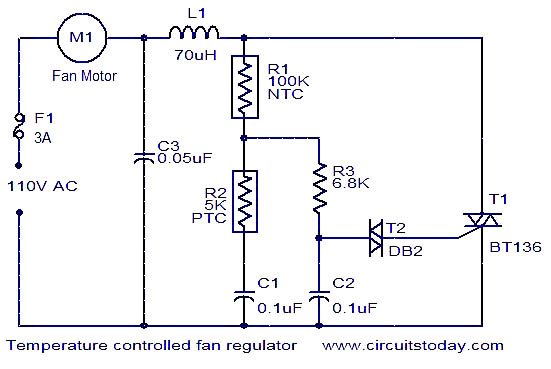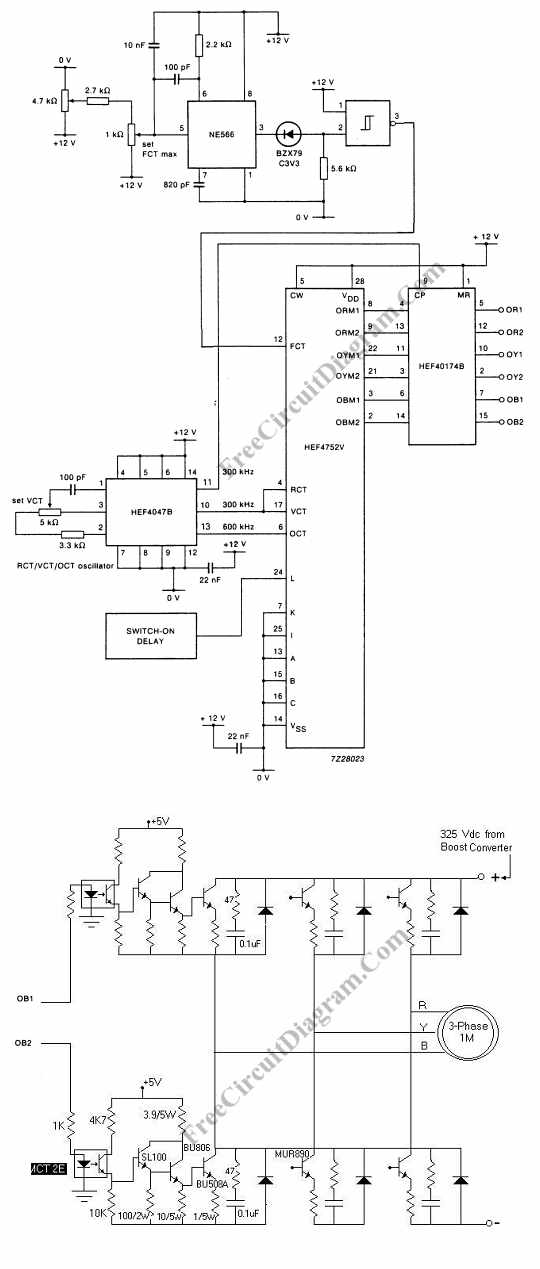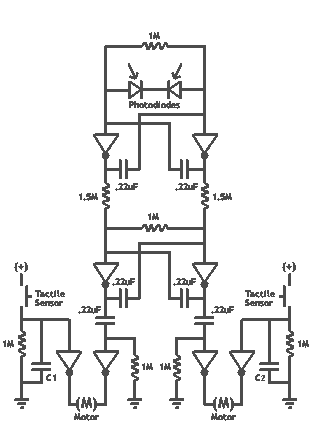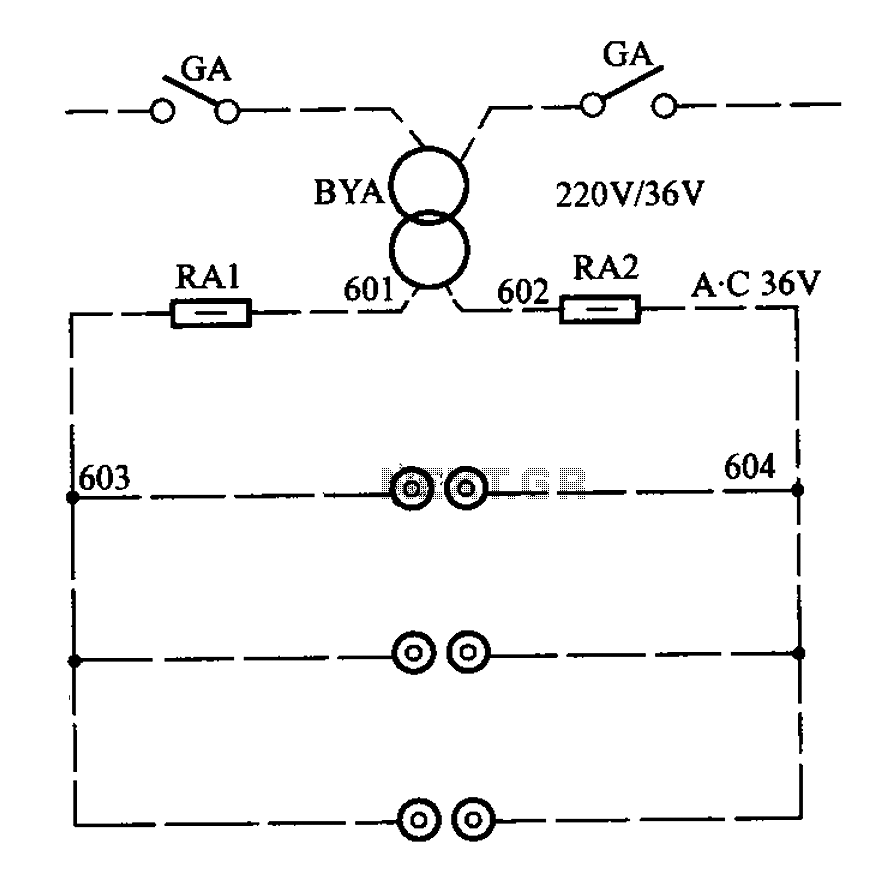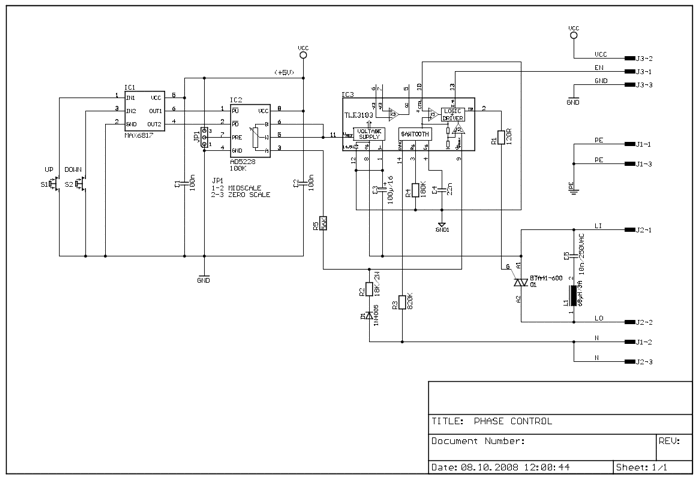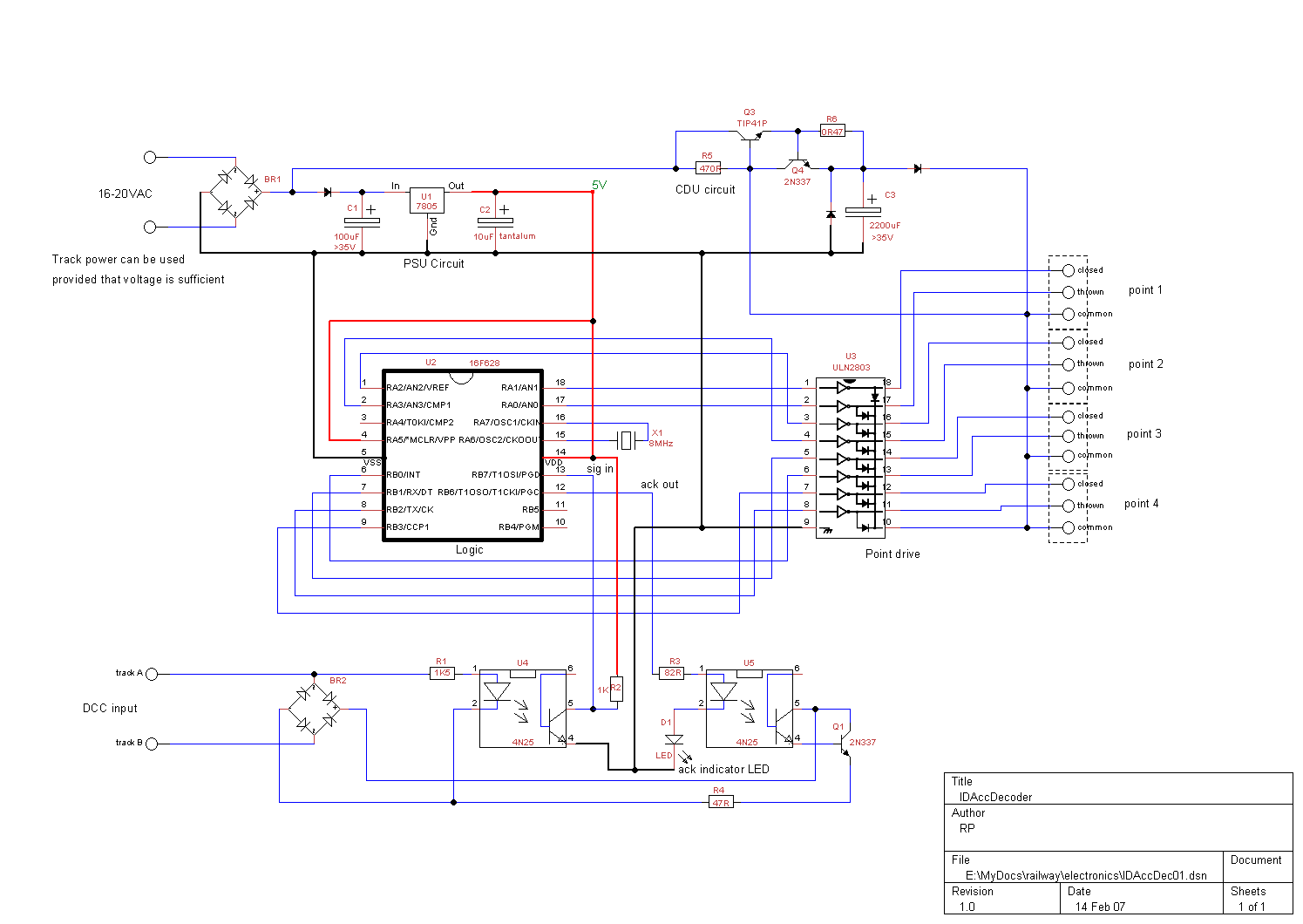
H-Bridge Motor Control Circuits
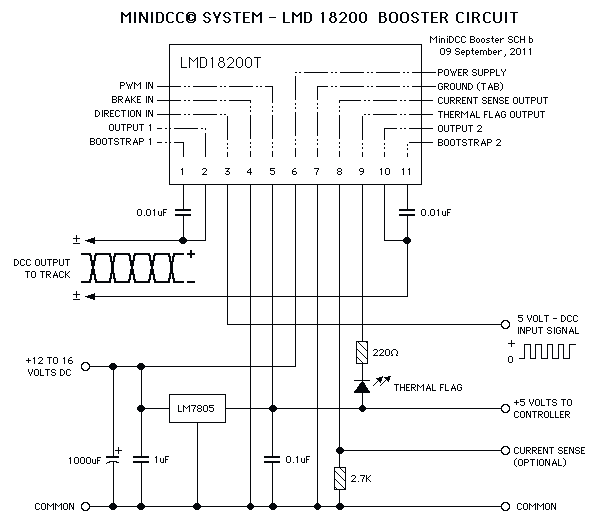
These circuits could be used as the basis for Model Railroad DCC Boosters or PWM motor controllers. The first schematic is for a basic 3 Amp - DCC Booster using the LMD 18200 CMOS, H-Bridge. Included in the design is a 5Volt regulator that supplies power to the DCC signal generation and display circuitry.
The described circuit serves as a foundational design for a Digital Command Control (DCC) booster, which is essential in model railroading for managing multiple trains on a single track. The use of the LMD18200 CMOS H-Bridge allows for efficient control of the motor's direction and speed, making it suitable for PWM (Pulse Width Modulation) applications.
The LMD18200 is a dual H-Bridge driver capable of delivering up to 3 Amperes of continuous output current per channel, which is adequate for driving small to medium-sized model train motors. The H-Bridge configuration enables the reversal of motor polarity, thus allowing for forward and backward motion control. This feature is crucial for model railroads where directional control of locomotives is required.
The inclusion of a 5V regulator in the design is significant as it ensures that the control circuitry, including the DCC signal generation and display components, receives a stable voltage supply. This is vital for the reliable operation of the DCC system, as fluctuations in voltage can lead to erratic behavior in the signal transmission to the locomotives.
In operation, the DCC booster takes a digital signal and converts it into a higher voltage suitable for driving the model trains. The PWM technique is employed to modulate the power delivered to the motors, allowing for precise speed control. This is achieved by rapidly switching the power on and off, effectively controlling the average voltage and current supplied to the motor.
Overall, this circuit design provides a robust solution for model railroad enthusiasts looking to implement advanced control systems for their layouts, enabling enhanced functionality and operational flexibility.These circuits could be used as the basis for Model Railroad DCC Boosters or PWM motor controllers. The first schematic is for a basic 3 Amp - DCC Booster using the LMD 18200 CMOS, H-Bridge. Included in the design is a 5Volt regulator that supplies power to the DCC signal generation and display circuitry. 🔗 External reference
The described circuit serves as a foundational design for a Digital Command Control (DCC) booster, which is essential in model railroading for managing multiple trains on a single track. The use of the LMD18200 CMOS H-Bridge allows for efficient control of the motor's direction and speed, making it suitable for PWM (Pulse Width Modulation) applications.
The LMD18200 is a dual H-Bridge driver capable of delivering up to 3 Amperes of continuous output current per channel, which is adequate for driving small to medium-sized model train motors. The H-Bridge configuration enables the reversal of motor polarity, thus allowing for forward and backward motion control. This feature is crucial for model railroads where directional control of locomotives is required.
The inclusion of a 5V regulator in the design is significant as it ensures that the control circuitry, including the DCC signal generation and display components, receives a stable voltage supply. This is vital for the reliable operation of the DCC system, as fluctuations in voltage can lead to erratic behavior in the signal transmission to the locomotives.
In operation, the DCC booster takes a digital signal and converts it into a higher voltage suitable for driving the model trains. The PWM technique is employed to modulate the power delivered to the motors, allowing for precise speed control. This is achieved by rapidly switching the power on and off, effectively controlling the average voltage and current supplied to the motor.
Overall, this circuit design provides a robust solution for model railroad enthusiasts looking to implement advanced control systems for their layouts, enabling enhanced functionality and operational flexibility.These circuits could be used as the basis for Model Railroad DCC Boosters or PWM motor controllers. The first schematic is for a basic 3 Amp - DCC Booster using the LMD 18200 CMOS, H-Bridge. Included in the design is a 5Volt regulator that supplies power to the DCC signal generation and display circuitry. 🔗 External reference
